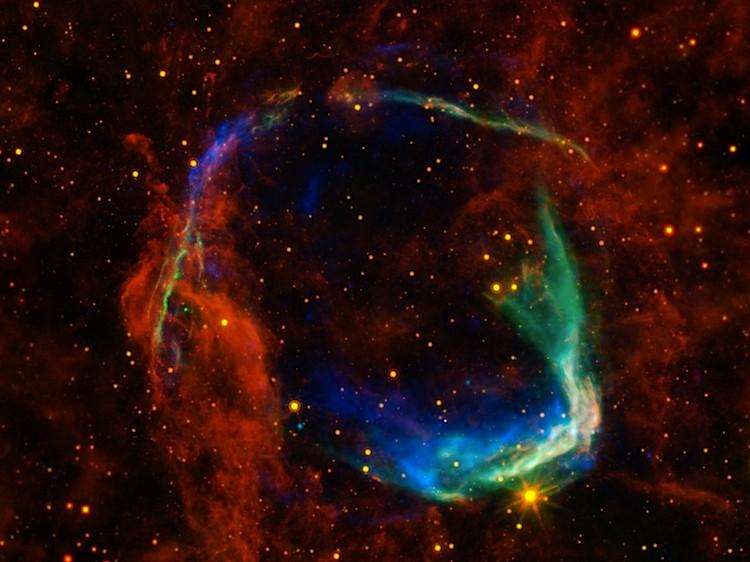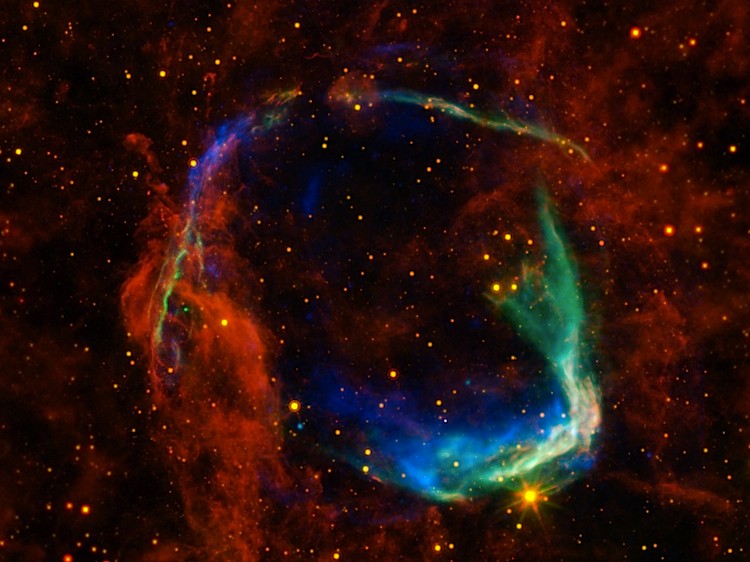Join The Epoch Times in celebrating the Chinese New Year with this article on a modern analysis of the Chinese ancients’ observation of a supernova 2,000 years ago!
An ancient celestial event observed by Chinese astronomers almost two millennia ago has been explained using NASA’s Spitzer Space Telescope and Wide-field Infrared Survey Explorer (WISE).
Scientists in the 1960s identified the phenomenon as the first supernova recorded in history, but its spherical remains are much bigger than expected.
The remnants of the explosion are known as RCW 86, and are located about 8,000 light-years away. The supernova occurred in a hollowed-out cavity, emitting matter much further and faster than normal.
“This supernova remnant got really big, really fast,” said lead researcher Brian J. Williams at North Carolina State University in a press release.
“It’s two to three times bigger than we would expect for a supernova that was witnessed exploding nearly 2,000 years ago. Now, we’ve been able to finally pinpoint the cause.”
The explosion was described as a “guest star” by the Chinese in 185 A.D. According to the Book of the Later Han, written in 445 A.D., the supernova was spotted in October (in the Chinese calendar) of that year, and remained until June of the following year.
The guest star is said to have had five colors, and fortune tellers saw it as an omen of war. Later, it was thought to be associated with a war that broke out in 189 A.D., causing thousands of deaths.
The new study, published online in the Astrophysical Journal, shows that it is a Type Ia supernova generated by the death of a white dwarf star.
“A white dwarf is like a smoking cinder from a burnt-out fire,” Williams said. “If you pour gasoline on it, it will explode.”
This is the first time that astronomers have determined a white dwarf can develop a surrounding cavity before it explodes.
RCW 86 was thought to be produced by a powerful core-collapse supernova, but the object was found to be a Type Ia event using X-ray data from NASA’s Chandra X-ray Observatory and the European Space Agency’s XMM-Newton Observatory.
“Modern astronomers unveiled one secret of a two-millennia-old cosmic mystery only to reveal another,” said Bill Danchi at NASA Headquarters in Washington DC in the release.
“Now, with multiple observatories extending our senses in space, we can fully appreciate the remarkable physics behind this star’s death throes, yet still be as in awe of the cosmos as the ancient astronomers.”
Apart from RCW 86, the Book of the Later Han also recorded other guest stars, the earliest being in 55 A.D. The book of the Later Han is the third of Twenty-Four Histories, a collection of official Chinese historical books.
The first official mention of guest stars was in the Records of the Grand Historian, written in 91 B.C. The first official record of a guest star being spotted appeared in the Book of Han, which was written in 82 A.D. According to the Book of Han, a guest star appeared in 134 B.C., and was thought to be related to a war that happened a year later.





